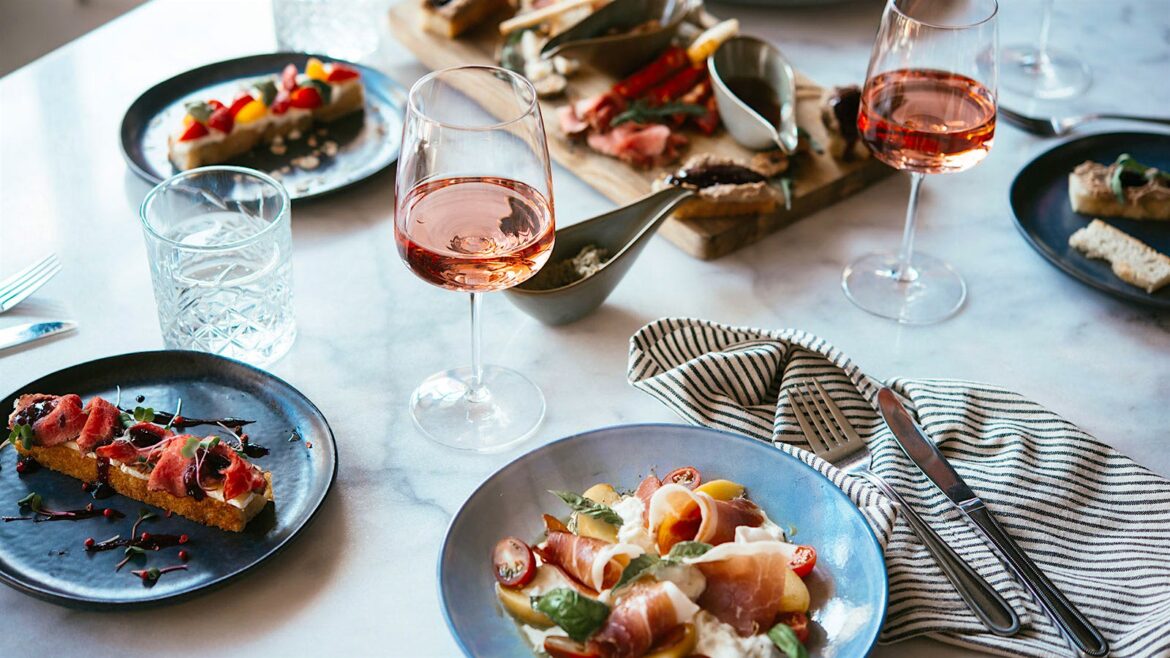“A rosé a day keeps the doctor away.” That’s the saying, right? Rosés can be found in such a diversity of shades, flavor profiles, varieties and price points these days, it’s hard to decide which one to try next. To get a gradient of selections, Wine Spectator reached out to top Restaurant Award–winning sommeliers for their favorite rosés—all under $30. From indigenous varieties to fresh takes on classic red grapes, from island wines to bottles from classic regions, check out the pros’ top budget picks!
Chinon Cabernet Franc
“Rosé made from Cabernet Franc can be one of the most challenging wine styles to get right. Bernard Baudry and Charles Joguet are two Chinon producers—both imported by Kermit Lynch—that routinely deliver fresh, herbaceous and finely tuned examples at around $25 retail.”—Jaime Pinedo, corporate wine and beverage director for Bacchus Hospitality Management, including Grand Award winners Spruce, the Village Pub and 2025 winner Selby’s, and 2025 Best of Award of Excellence winner Augustine
Tuscan Sangiovese
“When it comes to budget-friendly rosés under $25, Tuscany stands out as an incredible source for high quality wines that don’t break the bank. The region’s Sangiovese-based rosés often offer the perfect balance of fresh fruit flavors, such as ripe cherries and strawberries, along with a subtle herbal, almost balsamic quality that adds complexity. This makes them a great value because they often have more depth than typical, leaner rosé styles made from varieties like Grenache or Pinot Noir. One of my favorite examples is Monteraponi Rosato Colli della Toscana Centrale, which is usually priced around $24 or $25, though you might find it slightly higher depending on where you buy it. The producers, Michele Braganti and Alessandra Deiana, are well-loved figures in Tuscan wine and known for crafting wines that balance authenticity with artistry. If you can find their rosé, it will surely be one of the most memorable and satisfying budget-friendly rosés you’ve ever tried.”—Danny Mastropierro, general manager and wine director of 2025 Award of Excellence winner Bar Sprezzatura, San Francisco
Txakoli
“I have not seen many people veering away from the traditional rosés of Provence, although the Txakoli rosés of the Basque region do quite well. Probably the most popular that I can think of is Amesguren’s Ameztoi Rubentis. It is light, with lean notes of strawberry and citrus. It has a great minerality and a light spritz, which comes from bottling before the fermentation is complete.”—Pamela Walton, wine director for Best of Award of Excellence winner l’abeille, New York City
Spanish Garnacha
“Bodegas Muga Rosado is a rosé from Spain’s Rioja, but this family-run bodega actually has its roots in the Basque Region, a gastronomic hub of the Old World. Garnacha, a red grape native to the region, provides solid body and structure, while the meticulous and detailed winemaking lends the bottle the verve and lift of a crisp white wine. Thus, it is extremely versatile and can be paired with a range of dishes like freshly picked white asparagus, roasted game with Mediterranean herbss or rich seafood like turbot. Or, it can of course be heartily enjoyed on its own.”—Thomas Kakalios, lead sommelier for Award of Excellence winners Andros Taverna and Asador Bastian, and Mano a Mano, Chicago
Côtes du Rhône
“There’s probably never been a better time to be a rosé fan than right now. Gone are the days when only we somms drank it, because first, we really loved it, and second, we couldn’t sell it because all pink wine was associated with extra-sweet white Zinfandel. My current ‘at home’ budget rosé is E. Guigal Côtes du Rhône rosé. They have been producing rosé since the 1940s, and the grapes they use for this rosé are specifically grown for this wine. The 20-year-old vines produce a wine bursting with red fruit and balance, and it can be found anywhere for $20 or under.”—Anthony Taylor, wine director for Best of Award of Excellence winner Cru Uncorked, Moreland Hills, Ohio
Corsican Blends
“Corsica is known for rosé. It’s such a diverse, dynamic place for wine, but rosé is their thing. It’s a category I have been tasting and trying a lot. I find that even at value price points, Corsican rosés have such a beautiful lift, charm and minerality. They include all these indigenous varieties like Sciacarello and Nielluccio. They have a sense of place that is distinct, but a style that’s just like Provence roses—light, beautiful, salty and very delicately pigmented.”—Emily Nevin-Giannini, beverage director for Barcelona Wine Bar (24 Best of Award of Excellence–winning locations)
Sicilian Nerello Mascalese
“Rosé production in Italy follows two distinct paths: lean, fresh and vibrant rosés with pale color and fresh acidity, or deeply colored, savory and structured rosés that age and work well across the meal. We are particularly fond of the lean and vibrant style, particularly rosé produced on Mount Etna. Graci produces one of our perennial favorites, a blend of vineyards with multiple exposures. This wine is always a pale salmon hue with aromas of blood orange zest, dried herbs and a distinct salty character. The wine is absolutely delicious and is perfect for a broad array of dishes.”—Jason Alexander, wine director for Award of Excellence winner Che Fico and Che Fico Pizzeria, San Francisco, and Best of Award of Excellence winner Che Fico Parco Menlo, Menlo Park, California
Keep up with the latest restaurant news from our award winners: Subscribe to our free Private Guide to Dining newsletter!

